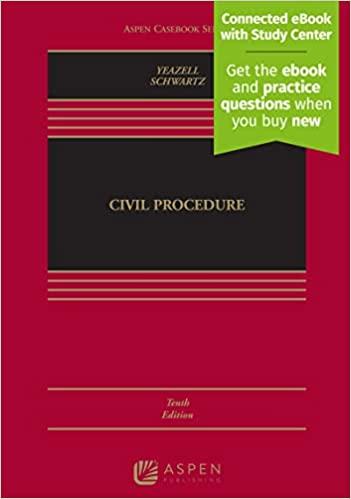Question
Please reply to the inquiry by the reference with an understanding *Please reply to the inquiry with an interpretation of the reference Issue: What overarching
Please reply to the inquiry by the reference with an understanding
*Please reply to the inquiry with an interpretation of the reference
Issue: What overarching issue was the court addressing or resolving (one questions not a paragraph just one sentence encapsulating)
Facts: What are the facts that the court described and cared about?
facts section should only include the actual facts of the case.
Rule of Law:What rule please mention the statue, case, legal principle mentioned in the images, did the court apply
*rule of law segment should only include the actual statutes, constitutional amendments or cases the Court applies the facts USE PRECEDENT FROM THE OTHER ITALIZES CASES
Application- how did the court apply the rule to the facts?
*application section should be how the Court applied the facts to the law
Conclusion: what result did the court reach and WHY?
Arizona v. Fulminate
[Fulminate was suspected of molesting and murdering a child in Arizona. While he was imprisoned in Florida on an unrelated offense, he shared a cell with Sarivola, who unbeknownst to him was an FBI informant. Sarivola made repeated attempts to influence the defendant to confess to the murder, but the defendant repeatedly denied involvement. Word for the heinous murder spread within the jail community and other inmates began to threaten Fulminate. Sarivola told Fulminate that he could protect the him, but that Fulminate would first have to tell him the truth about murder. Fulminate then admitted to killin the child. Arizona tried Fulminate for murder and the confession was offered into evidence]
JUSTICE WHITE delivered the opinion of the court
We deal first with the State's contention that the court below erred in holding Fulminante's confession to have been coerced. The State argues that it is the totality of the circumstances that determines whether Fulminante's confession was coerced, [T]he Arizona Suprme Court stated a "determination regarding the voluntariness of a confession. . . must be viewed in a totality of circumstances," nante's statement to Sarivola had been coerced.
In applying the totality of the circumstances test to determine that the confession to Sarivola was coerced, the Arizona Supreme Court focused on a number of relevant facts. First, the court noted that "because [Fulminante] was an alleged child murderer, he was in danger of physical harm at the hands of other inmates." In addition, Sarivola was aware that Fulminante had been receiving " 'rough treatment from the guys.' Using his knowledge of these threats, Sarivola offered to protect Fulminante in exchange for a confession to Jeneane's murder,and "[i]n response to Sarivola's offer of protection, [Fulminante] confessed." Agreeing with Fulminante that "Sarivola's promise was 'extremely coercive,'the Arizona Court declared: "[T]he confession was obtained as a direct result of extreme coercion and was tendered in the belief that the defendant's life was in jeopardy if he did not confess. This is a true coerced confession in every sense of the word."
Although the question is a close one, we agree with the Arizona Supreme Court's conclusion that Fulminante's confession was coerced.3The Arizona Supreme Court found a credible threat of physical violence unless Fulminante confessed. Our cases have made clear that a finding ofcoercion need not depend upon actual violence by a government agent;4a credible threat is sufficient. As we have said, "coercion can be mental as well as physical, and . . . the blood of the accused is not the only hallmark of an unconstitutional inquisition." As inPayne,where the Court found that a confession was coerced because the interrogating police officer had promised that if the accused confessed, the officer would protect the accused from an angry mob outside the jailhouse door, so too here, the Arizona Supreme Court found that it was fear of physical violence, absent protection from his friend (and Government agent) Sarivola, which motivated Fulminante to confess. Accepting the Arizona court's finding, permissible on this record, that there was a credible threat of physical violence, we agree with its conclusion that Fulminante's will was overborne in such a way as to render his confession the product of coercion.
Step by Step Solution
There are 3 Steps involved in it
Step: 1

Get Instant Access to Expert-Tailored Solutions
See step-by-step solutions with expert insights and AI powered tools for academic success
Step: 2

Step: 3

Ace Your Homework with AI
Get the answers you need in no time with our AI-driven, step-by-step assistance
Get Started


